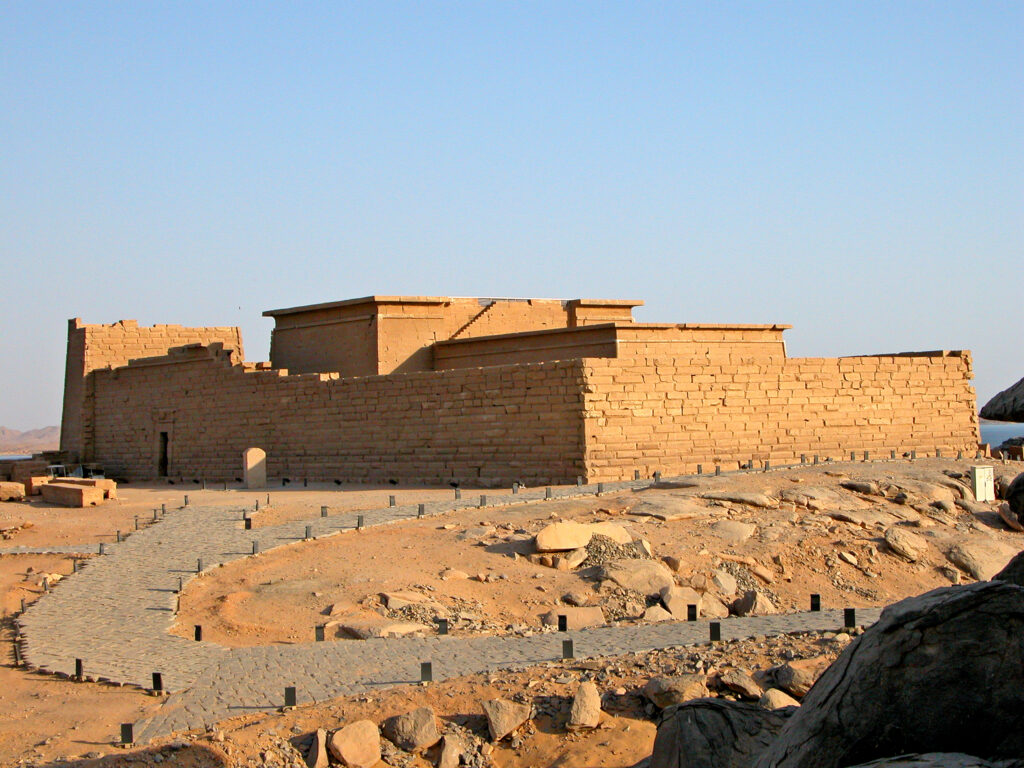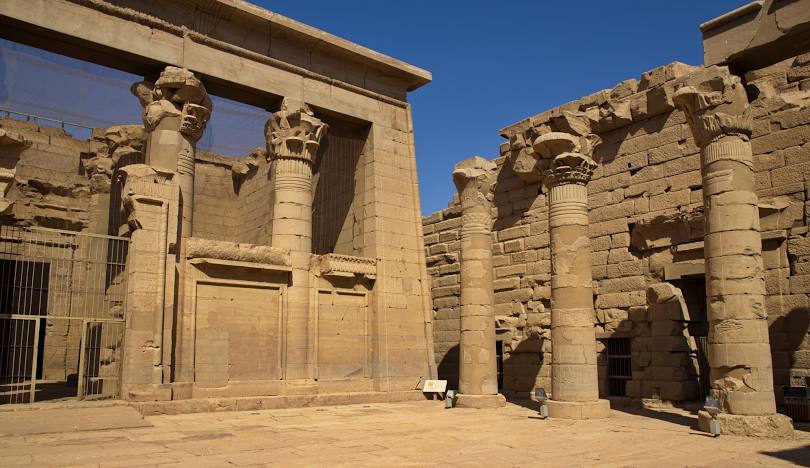- Historical Context: The Kalabsha Temples date back to the Roman period and were originally built to honor the gods Mandulis and Isis. They are among the largest temples in Nubia.
Flooding Threat: When the Aswan High Dam was completed in 1970, the area around the temples was submerged under Lake Nasser, which posed a significant threat to these ancient structures.
UNESCO Involvement: The United Nations Educational, Scientific and Cultural Organization (UNESCO) played a crucial role in the salvage operations, initiating the Nubian Campaign, which aimed to protect and relocate numerous archaeological sites.
Relocation Process:The temples were dismantled and moved to a higher location to avoid flooding.
The most significant structure, the Temple of Kalabsha, was carefully cut into blocks and transported to a new site, approximately 50 kilometers away.
The relocation involved meticulous planning to ensure the structural integrity and alignment of the temples in their new location.
Construction of a New Site: The temples were reassembled at a site overlooking Lake Nasser, where they could be preserved for future generations and made accessible to tourists.
Current Status: Today, the Kalabsha Temples stand as a testament to ancient Nubian architecture and the successful efforts of international cooperation to protect cultural heritage. The site is now a popular tourist destination, attracting visitors interested in ancient Egyptian history and architecture.
The salvage of the Kalabsha Temples is not only significant for preserving historical artifacts but also represents a broader commitment to safeguarding cultural heritage in the face of modern development.
The Kalabsha Temple Complex is an important archaeological site located near Aswan, Egypt, on the shores of Lake Nasser. This site features several temples that showcase ancient Egyptian architecture and history. Here’s a detailed description of the temples within the complex, along with a suggested itinerary for your visit. Temples of the Kalabsha Complex
Kalabsha Temple (Templo de Kalabsha):
Overview: Originally built during the reign of the Roman Emperor Augustus, this temple is dedicated to the Nubian god Mandulis. It is one of the largest and best-preserved temples in Nubia.
Architecture: The temple features impressive sandstone blocks, an outer courtyard, a hypostyle hall with columns adorned with lotus and papyrus motifs, and a sanctuary. The reliefs on the walls depict scenes of rituals, offerings, and the gods.
Significance: The temple’s location and design highlight the cultural fusion between Egyptian and Nubian traditions during the Roman period.
Beit El Wali Temple:Overview: Built by Pharaoh Ramses II, this small temple was dedicated to the gods Amun and Ra. Its name means “House of the Wali,” referring to a local deity.
Architecture: The temple features a single sanctuary with beautifully carved reliefs depicting Ramses II in various scenes of worship and military victory. Notably, the reliefs illustrate the Pharaoh’s prowess in battle, emphasizing his divine right to rule.
Significance: Beit El Wali is remarkable for its exquisite carvings and inscriptions, providing insight into Ramses II’s reign and religious practices.
Kertasi Kiosk:
Overview: This smaller structure was originally built to honor the goddess Isis and is also known as the Kiosk of Kertasi.
Architecture: The kiosk consists of a colonnaded hall and is characterized by its open design, allowing light to flood the interior. It features beautiful reliefs that portray various deities and scenes from Egyptian mythology.
Significance: The Kertasi Kiosk serves as a representation of the transition from traditional temples to more open and accessible spaces in later Egyptian architecture.
Gerf Hussein Temple:
Overview: The ruins of the Gerf Hussein Temple, dedicated to the goddess Hathor, were relocated to avoid submersion due to the construction of Lake Nasser. This temple was originally constructed during the reign of Ramses II.
Architecture: While much of the temple is now in ruins, the remaining structures display a blend of religious and administrative functions, with various chambers and sanctuaries.
Significance: The relocation of Gerf Hussein highlights the efforts to preserve Egypt’s archaeological heritage in the face of modernization and environmental challenges.
Day Trip Itinerary
Start your day with a scenic drive to the Kalabsha Temple Complex, which was located about 57 km southwest of Aswan.Then moved in 1962 behind the high dam
Explore the main temple dedicated to Mandulis. Spend time admiring the intricate carvings and taking photographs. A local guide can provide insights into the history and significance of the temple.
Proceed to the nearby Beit El Wali Temple. Spend approximately 30-45 minutes here to appreciate the impressive reliefs and learn about Ramses II’s accomplishments.
Next, visit the Kertasi Kiosk. Take your time to enjoy the open space and the remaining reliefs that celebrate Egyptian mythology.
Head to the ruins of the Gerf Hussein Temple. Spend time exploring the site and discussing its historical significance with your guide.
Depart for Aswan, reflecting on the rich history and culture experienced during the trip.
Arrive in Aswan
Return to your hotel or explore more of Aswan’s attractions, such as the Nubian Museum or the Philae Temple.
Tips for Your Visit
Dress Appropriately: Wear comfortable clothing and sturdy shoes, as you will be walking and exploring ancient sites.
Stay Hydrated: Bring water to stay hydrated, especially during the warmer months.



